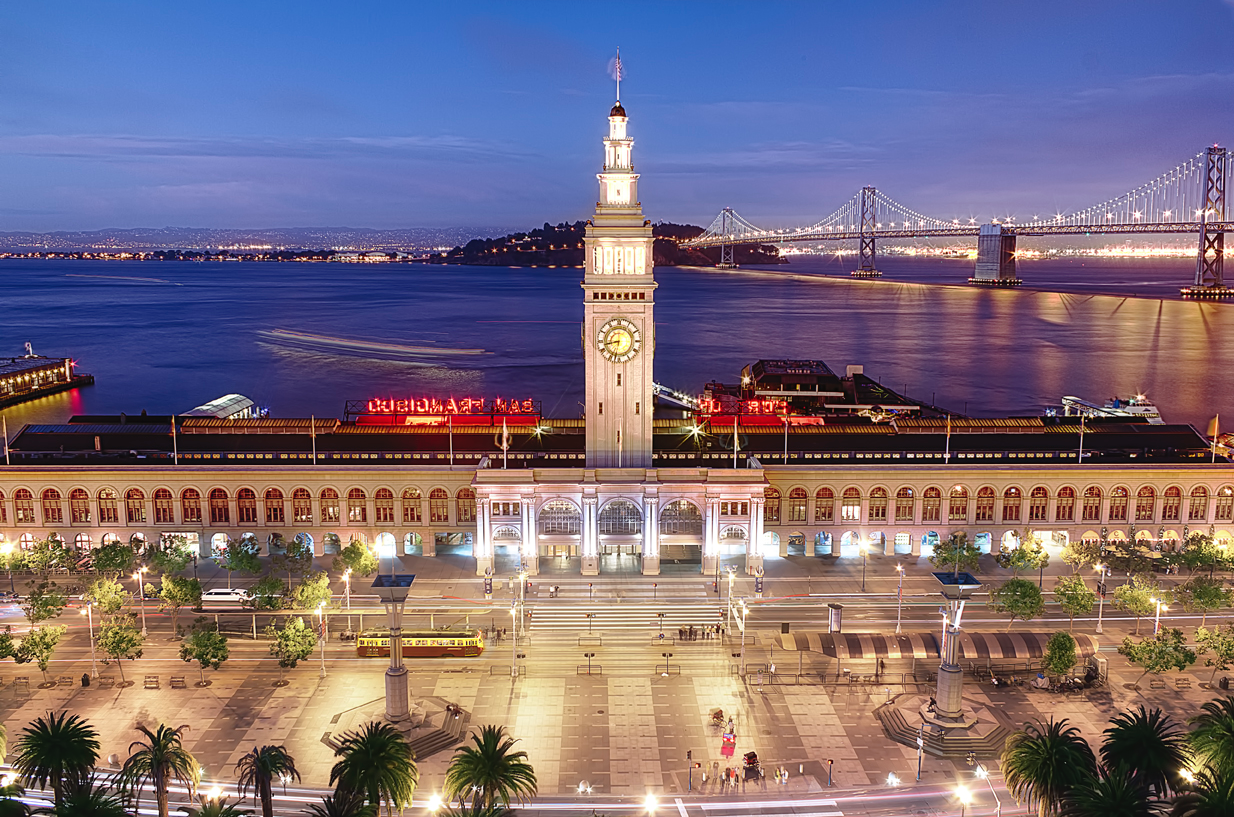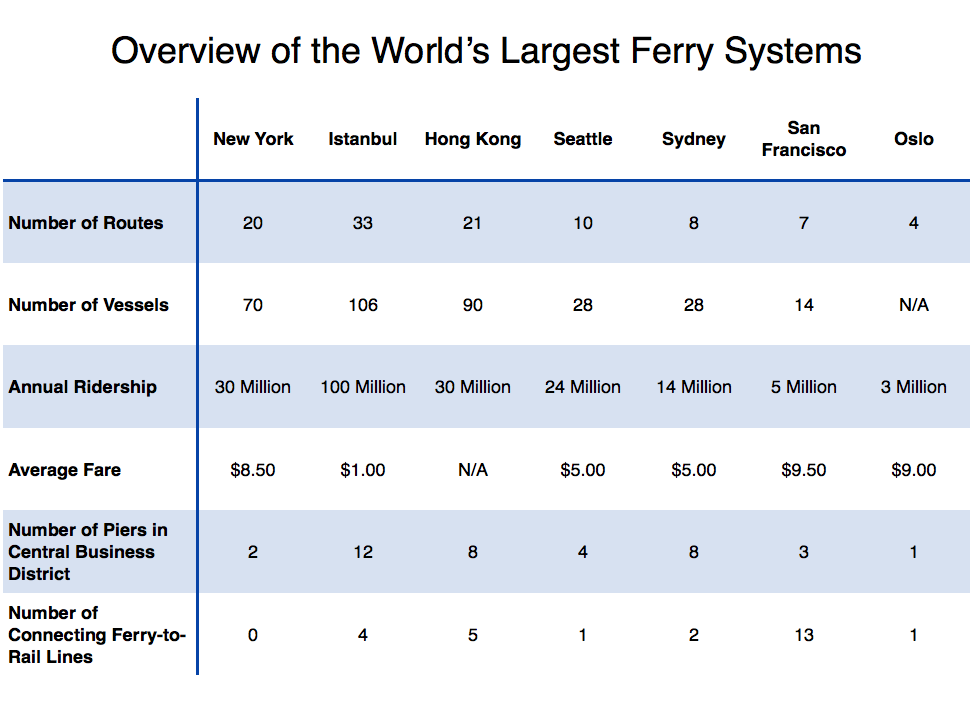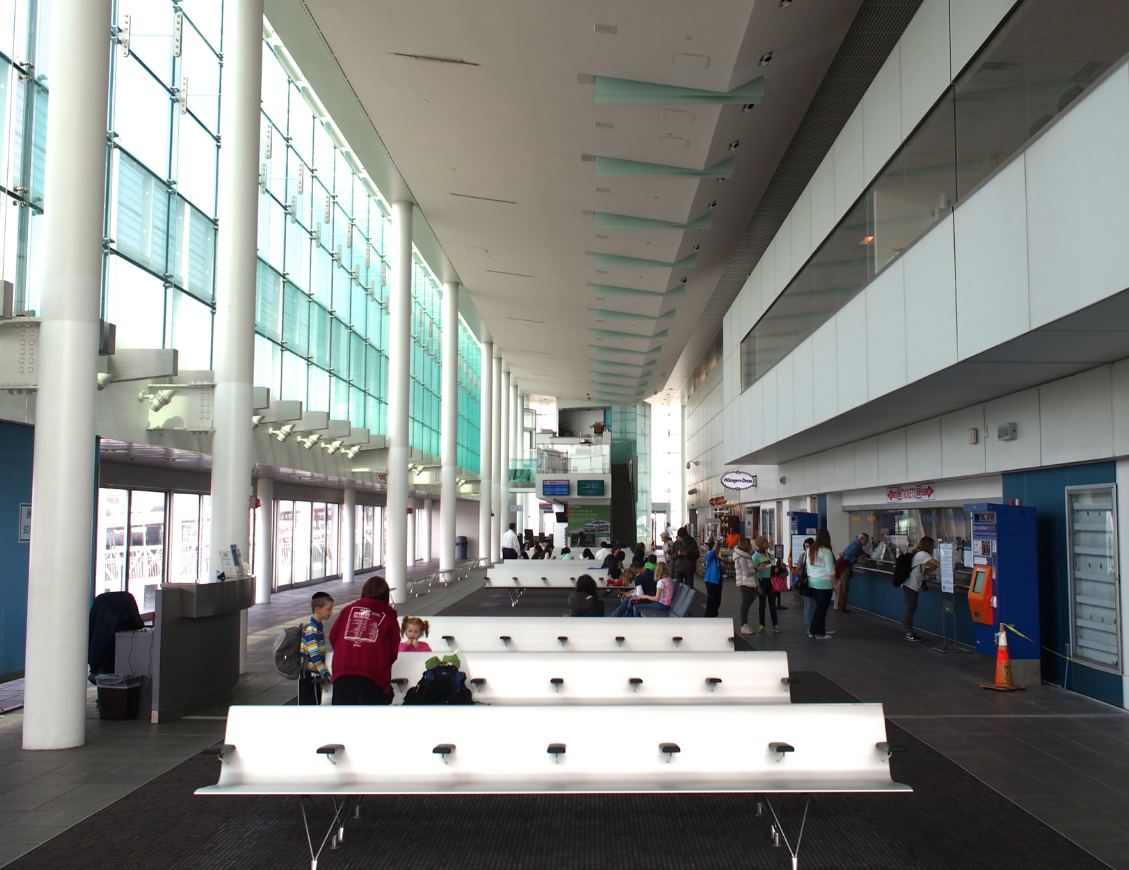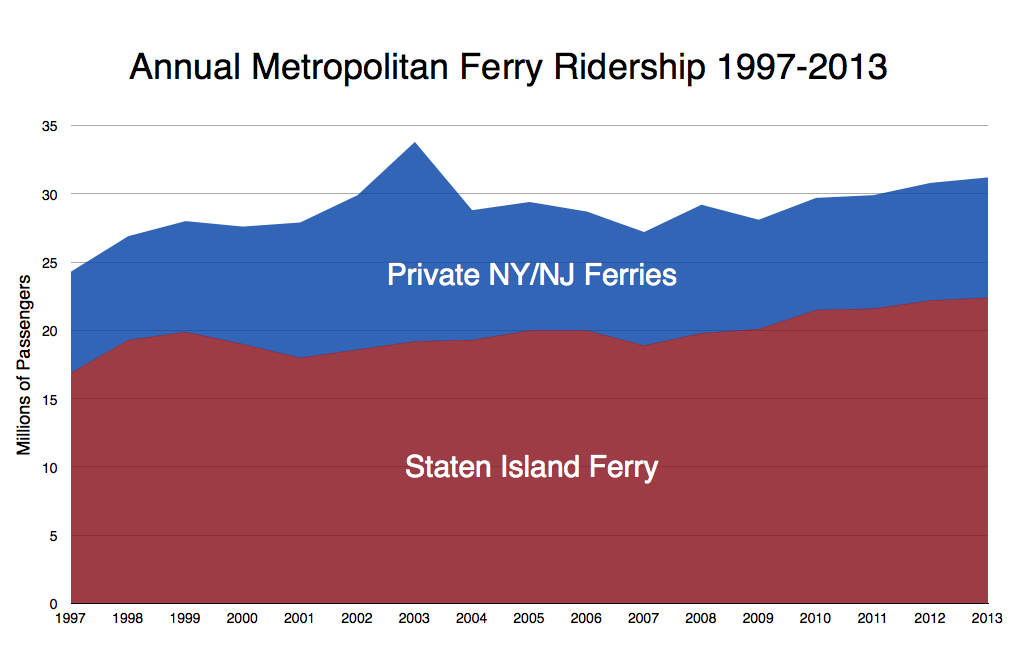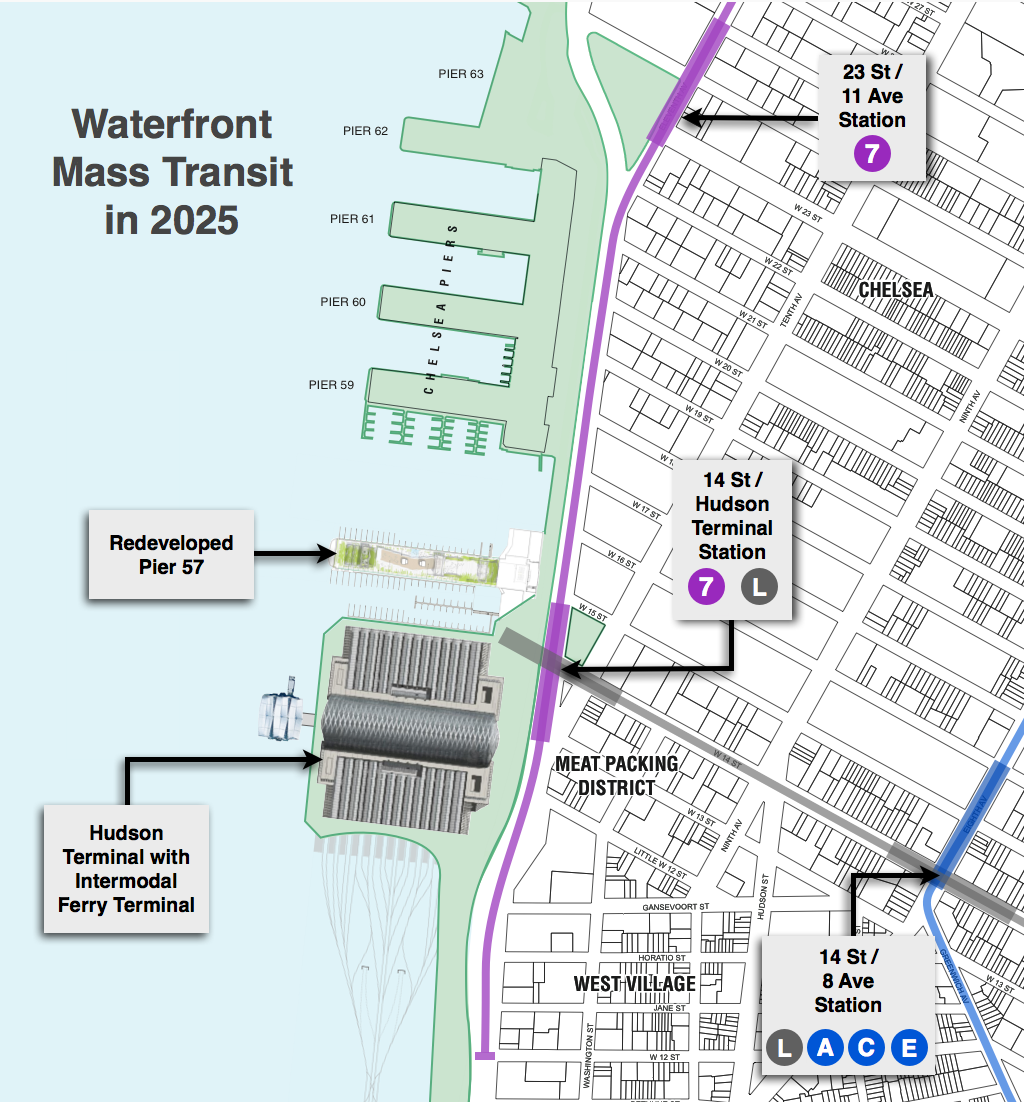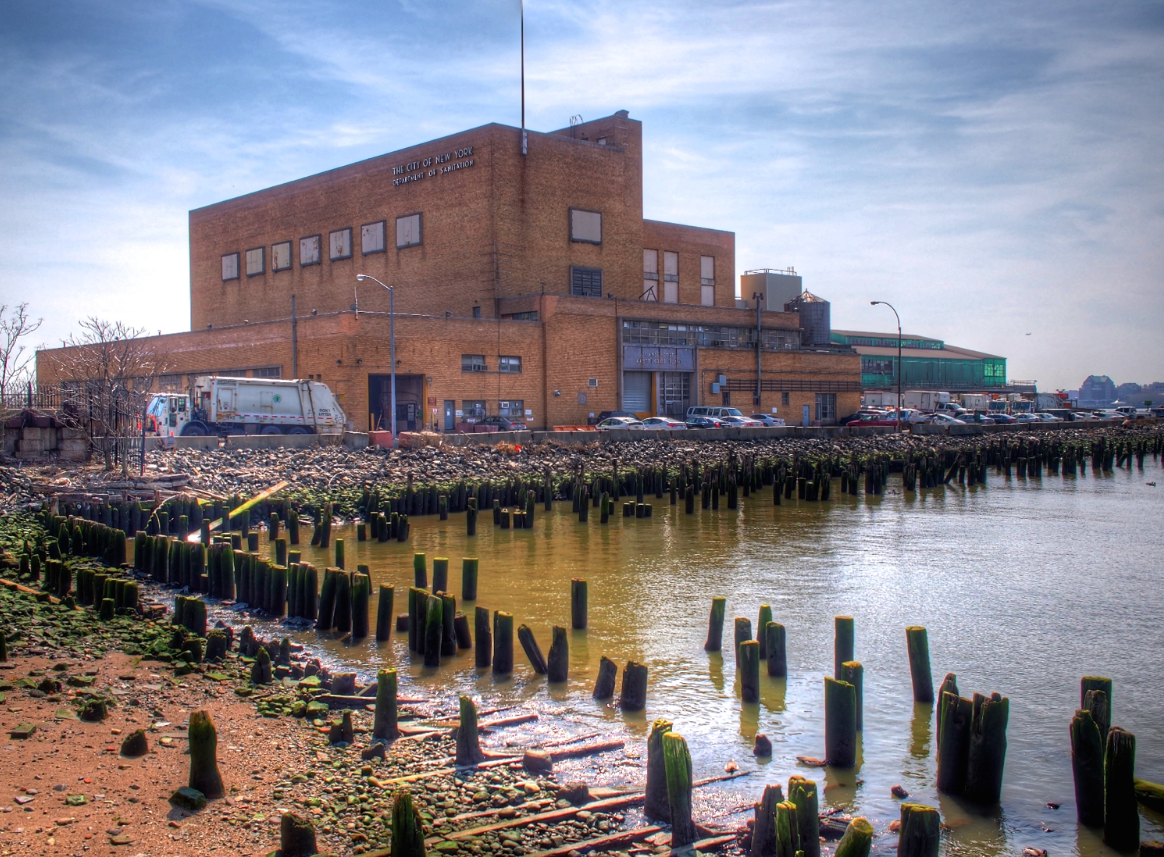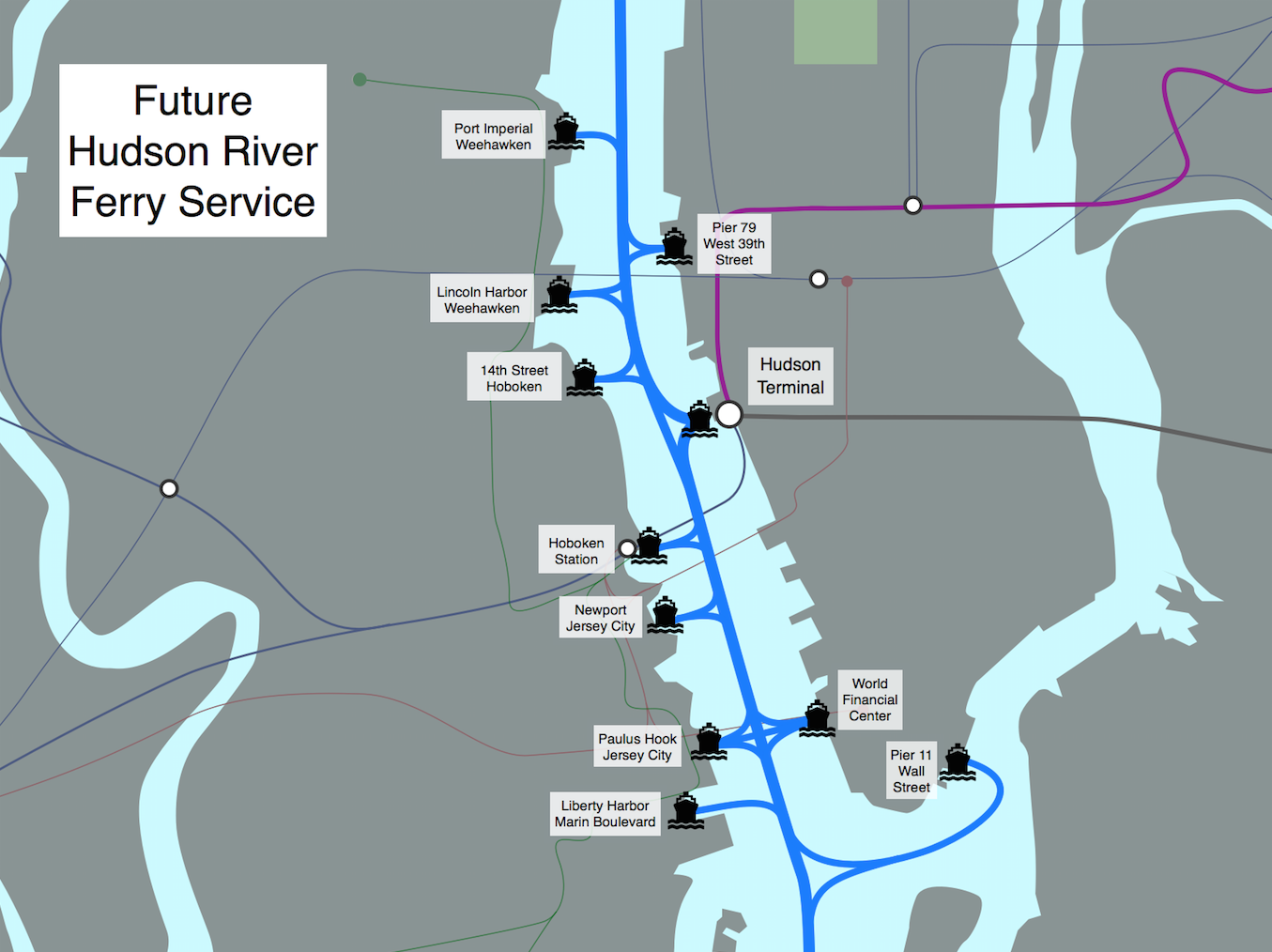Ferry-to-Rail Integration in Midtown West
If you commute from Oakland to San Francisco by ferry, at the end of your $6.25 trip, you arrive at the beaux-arts San Francisco Ferry Building on the grand Embarcadero waterfront. From there, you can connect to a number of transit options, including streetcars, cable-cars, four regional rail lines, and seven light rail lines. With the completion of the Transbay Transit Center in 2017, the newest high-speed rail terminal in the United States will be within a stone’s throw of the second busiest ferry terminal on the west coast. Internationally, the integration of waterborne transit with fixed rail transit systems is not uncommon. The world’s largest ferry systems in cities like Istanbul, Hong Kong, Seattle, Sydney, and Oslo all offer direct ferry-to-rail transfers, often with multiple lines across multiple modes of transit. But in the largest commercial district in the United States—midtown Manhattan—tens of thousands of daily ferry riders are dropped off in relative isolation from any mass transit routes, let alone multiple ones.
For residents of the coastal neighborhoods on the East River, NY Waterway and New York Water Taxi operate ferries terminating in midtown Manhattan at the East 34th Street Ferry Landing. While riders can connect directly to the M34 Select Bus, the closest subway station is at 33rd Street and Park Avenue. However, unlike residents of New Jersey, residents of Queens and Brooklyn have numerous other mass transit options for travel to Manhattan. There are 32 tracks of subway and commuter rail that cross the East River compared to just 6 tracks that cross the Hudson River. In addition to increasing the number of tracks from New Jersey, expanding ferry service to midtown west would help alleviate this wide gap in cross-Hudson transit options.
Currently, for New Jersey residents commuting to New York City by ferry, the Hudson River’s sole midtown ferry terminal is Pier 79 at 39th Street and 12th Avenue. While NY Waterway offers a number of connecting busses for ferry riders, bus frequency, capacity, and speed (especially to midtown east) all lag behind alternative mass transit routes. For those looking to connect to the subway, it takes approximately twenty minutes to walk over four avenues from Pier 79 to the closest station at 42nd Street and 8th Avenue. But even when the 7 Line Extension opens at the end of 2014, it will still take ten to fifteen minutes to connect from Pier 79 to the station entrance at 34th Street between 10th and 11th Avenues. Pier 79 is also separated from midtown by the Javits Center super-block, which stretches from 34th Street to 40th Street in between 11th and 12th Avenues. For ferry riders looking to reach destinations on streets in the 30s, this super-block can create significant and unavoidable detours along an often truck-laden portion 12th Avenue.
Despite the lack of mass transit options for ferry riders traveling to midtown Manhattan, ferry ridership within the metropolitan region has grown by nearly 30% over the past fifteen years. This can largely be attributed to the redevelopment of the Hudson and East River waterfronts and corresponding population growth in adjacent communities. With the opening and expansion of the Hudson Bergen Light Rail, waterfront cities and towns such as Hoboken and West New York have seen tremendous growth over the past two decades. Further, these neighborhoods include some of the highest percentages of residents commuting by public transit in the nation.
Considering the changing demographics, infrastructure, and real estate development along the Hudson River waterfront and within the region as a whole, it is critical that metropolitan residents and visitors have access to a midtown ferry terminal that provides direct connections to mass transit. In order to best accomplish this goal, Real Transit has proposed the construction of Hudson Terminal, which would incorporate a ferry terminal within a larger regional rail and subway station. Hudson Terminal would be located at the abandoned Piers 54 and 56 on the Hudson River as well as the soon-to-be abandoned Gansevoort Peninsula. Not only would a midtown intermodal ferry terminal benefit the current ferry riders along Hudson River routes, but it would also encourage the creation of new routes to under-served waterfront cities and towns. In addition to closing existing cross-Hudson transit gaps, expanded Hudson River ferry service would also create back-up transit redundancies for use when primary transit routes become unavailable. For instance, following the attacks of September 11, 2001 and the flooding of rail tunnels under the Hudson River after Hurricane Sandy, ferry service played a key role in transporting tens of thousands of daily commuters unable to travel to New York City by rail.
Improved ferry service, like all transit improvements, would also stimulate local and regional economies. The Hudson River Park Trust—who manages the Hudson River waterfront—has recently struggled to find sources of income to close growing budget gaps and, as a result, suggested auctioning waterfront air rights along the Hudson River. However, in order to maximize the value of these air rights and promote responsible waterfront real estate development, the Hudson River Park Trust should strive to incorporate new transit opportunities into their planning. In its 2013 Citywide Ferry Study, the New York City Economic Development Corporation found that new ferry service increased property values within 1/8th of a mile of a ferry stop by 8% and also resulted in increases in new construction of residential, retail, and commercial spaces. From a broader perspective, the increase in worker accessibility as a result of new ferry service also generates wider, regional economic benefits. As midtown real estate development increasingly moves westward, planning organizations such as the Hudson River Park Trust must focus on transit-based development in order to most efficiently prepare for the future growth of the metropolitan region.
Perhaps the greatest success story involving the efficient integration of waterborne transit with traditional mass transit can be seen in the United States’ second largest business district—Lower Manhattan—where the Staten Island Ferry ushers 75,000 daily commuters to the Whitehall Ferry Terminal, which in turn provides connections to multiple mass transit lines. Midtown Manhattan also needs an efficient intermodal ferry terminal in order to serve the growing demand for public transit within the cities and towns along the Hudson River. By constructing Hudson Terminal and creating a direct ferry-to-rail connection in midtown Manhattan, the metropolitan region can finally realize the world-class potential of its ferry system.

